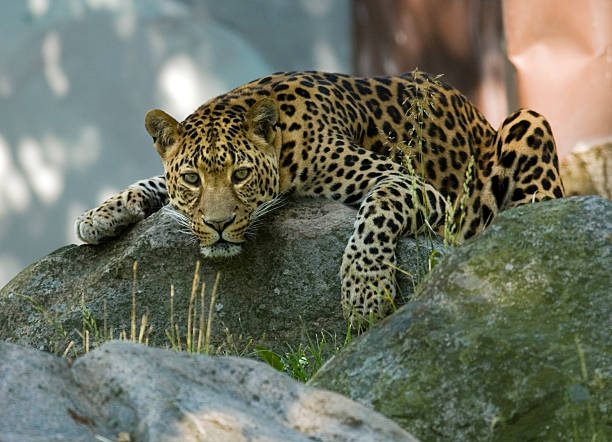Different Types Of Wild Animal
1.Gorilla
Species and Classification: The Eastern gorilla (Gorilla beringei) and the Western gorilla (Gorilla gorilla) are the two varieties of gorillas. Subspecies are further separated within each species. The mountain gorilla (Gorilla beringei beringei) and the eastern lowland gorilla (Gorilla beringei graueri) are both members of the genus Gorilla. The Cross River gorilla (Gorilla gorilla diehli) and the western lowland gorilla (Gorilla gorilla gorilla) make up the Western gorilla.
Habitat and Distribution: The woodlands of central and eastern Africa are home to gorillas. They live in a variety of environments, such as swamp woods, lowland rainforests, and montane forests. Several nations, including Uganda, Rwanda, the Democratic Republic of the Congo, Cameroon, Nigeria, and Gabon, are home to gorillas.
Conservation Status: Due to habitat degradation, poaching, and diseases, gorillas are considered an endangered species. Their populations have dramatically decreased throughout time, mostly as a result of human activities and disputes. The survival of gorilla populations depends on conservation activities like habitat preservation, anti-poaching programmes, and ecotourism.
Size and Physical Characteristics: Gorillas are powerful, huge animals. The largest individuals are adult males, or "silverbacks," who can reach heights of nearly 5.5 feet (1.7 metres) and weights of up to 400 pounds (180 kilogrammes). Females are typically smaller and weigh between 200 and 250 pounds (90 and 113 kilogrammes). Gorillas have a sturdy physique, a wide chest, and long, strong arms. Their body is covered with dense, black hair that serves as insulation and protection. The sagittal crest on the gorilla's skull is quite noticeable, and it is more so in the males.
2.Amur Leopard
Habitat: Primarily found in the Amur-Heilong and Primorye regions of Russia's Far East, as well as the Jilin Province in northeastern China, Amur leopards can also be found in the arctic regions of Kazakhstan and China. They have the ability to survive in a variety of environments, including riverine forests, mixed forests, and boreal forests. These leopards are well acclimated to the cold weather thanks to their thick coats, which act as insulation.
Behavior: Amur leopards are found mostly in the temperate forests of the Russian Far East, particularly in the Amur-Heilong and Primorye regions, as well as the Jilin Province in northeastern China. They have the necessary adaptations to survive in a variety of settings, including as riverine forests, mixed forests, and boreal forests. Because their thick fur acts as insulation, these leopards are well adapted to the chilly temperature.
Population and Conservation Status: One of the rarest and most imperilled large cat species in the world is the Amur leopard. It is considered critically endangered since it is thought that fewer than 100 individuals now exist in the wild. Their habitat degradation from logging, human encroachment, and poaching for their exquisite body parts and fur, which are highly sought-after in the illegal wildlife trade, are the greatest challenges to their survival. The main goals of conservation efforts are to preserve their habitat, create protected areas, take anti-poaching precautions, and increase public awareness of their situation.
Conservation Organizations and Efforts:The Amur leopard is being actively conserved by a number of organisations and governments. An international organisation dedicated to the preservation of these species is called the Amur Leopard and Tiger Alliance (ALTA). To protect their habitat, protected areas have been created, such as Russia's Land of the Leopard National Park. To prevent the extinction of the Amur leopard, researchers and conservationists monitor populations, carry out scientific studies, and put conservation measures into practise.
3.Sunda Island Tiger
The Javan tiger, often called the Sunda tiger, was the smallest tiger subspecies and stood out from the others in terms of looks. Its fur coat was more reddish-orange in colour and had stripes that were smaller and more closely spaced. The male Javan tiger was about 2.2 to 2.5 metres (7.2 to 8.2 feet) long, including the tail, and weighed between 100 and 140 kilogrammes (220 and 310 pounds).
The Javan tiger and the Bali tiger were closely related. The latter was also referred to as the Balinese tiger. Unfortunately, nothing is known about the unique traits and appearance of the Bali tiger due to a lack of thorough information and few encounters.4.Black Rhions
Size: Male black rhinos are larger than females and typically weigh between 800 and 1,400 kilogrammes (1,760 and 3,080 pounds) as adults. They have a body length of around 2.8 to 3.8 metres (9.2 to 12.5 feet), including the head and body, and are approximately 1.4 to 1.8 metres (4.6 to 5.9 feet) tall at the shoulders.
Habitat: Savannahs, woods, and dense undergrowth are just a few of the habitats that black rhinos call home. Their main geographic ranges are in eastern and southern Africa, in nations like Namibia, South Africa, Zimbabwe, Kenya, and Tanzania. They choose locations with easy access to water and lots of greenery.
Diet: As herbivores, black rhinos mostly eat a variety of vegetation, such as leaves, twigs, shoots, and fruits. They selectively browse on various plant kinds using their prehensile lip. The food of black rhinos is specialised, with a preference for woody vegetation and bushes.

Comments
Post a Comment